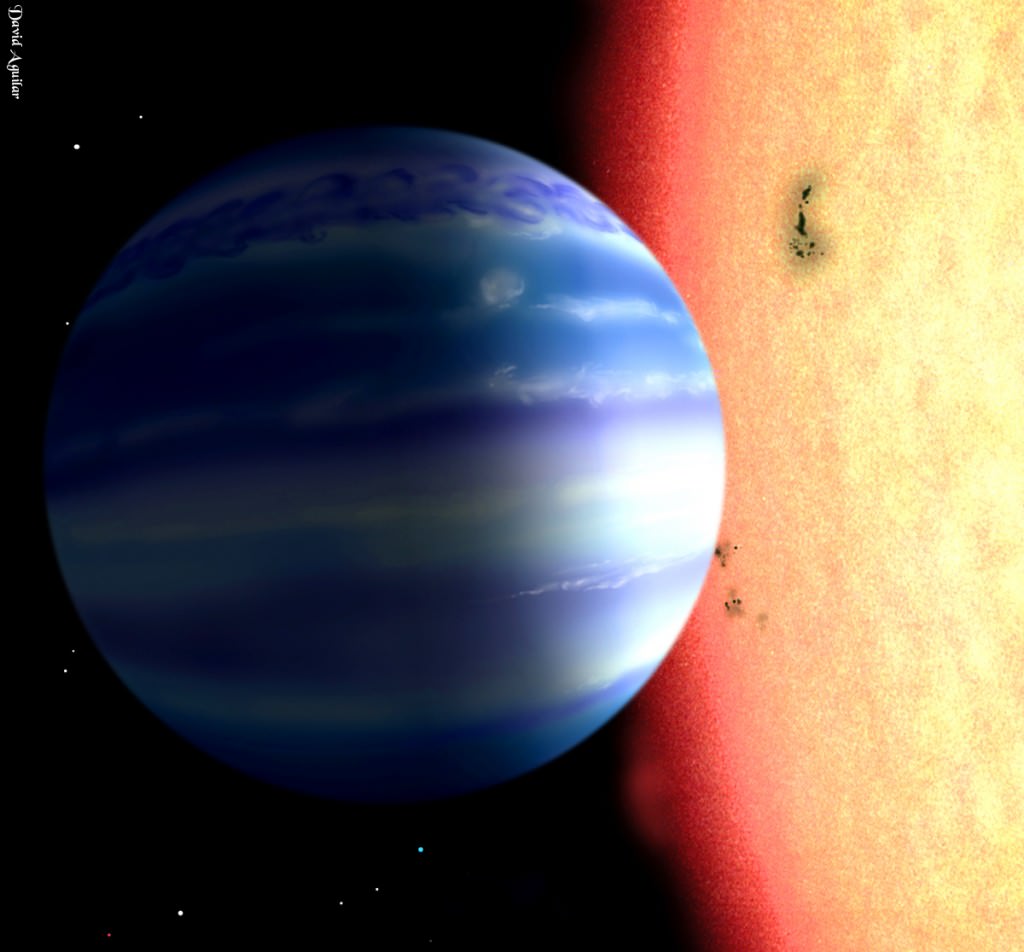Hydroxyl (OH) Seen for the First Time in an Exoplanet Atmosphere
By Paul M. Sutter
The molecule hydroxyl (HO) is common on Earth, but astronomers have not yet determined how abundant it is on other worlds. For the first time, astronomers have conclusively detected it in the atmosphere of an ultra-hot Jupiter, WASP-33b.
WASP-33b is a strange exoplanet. 400 lightyears away from us, the planet is known as an ultra-hot Jupiter: it’s a gas giant that orbits its host star closer than Mercury does to our own Sun. That extreme distance makes the atmosphere of WASP-33b reach a temperature of over 2,500° C, hot enough to melt most metals.
That exoplanet is a great candidate for studying alien atmospheres, because it’s so hot. At those temperatures, chemicals in the atmosphere emit radiation with distinct spectral fingerprints. As WASP-33b orbits around its star, the radiation emitted by the chemicals periodically redshifts and blueshifts, allowing astronomers to pick them out against the glare of the parent star.
Using this technique, an international collaboration of astronomers led by a researcher from the Astrobiology Center at Queen’s University Belfast used the Subaru telescope to find signatures of chemicals within the atmosphere of WASP-33b.
They found hydroxyl – a molecule of one oxygen atom and one hydrogen atom (abbreviated as OH). Hydroxyl likely plays an important role in the chemical mixture of WASP-33b’s atmosphere as it interacts with water vapor and carbon monoxide.
The lead researcher based at Queen’s University Belfast, Dr. Stevanus Nugroho, said, “This is the first direct evidence of OH in the atmosphere of a planet beyond the Solar System. It shows not only that astronomers can detect this molecule in exoplanet atmospheres, but also that they can begin to understand the detailed chemistry of this planetary population.”
On Earth, hydroxyl is formed in the atmosphere when water vapor interacts with oxygen. On WASP-33b, the hydroxyl likely forms when the intense heat from the star blasts apart water vapor.
“We see only a tentative and weak signal from water vapor in our data, which would support the idea that water is being destroyed to form hydroxyl in this extreme environment,” explained Dr. Ernst de Mooij from Queen’s University Belfast, a co-author on this study.
As to the importance of the work, Dr. Neale Gibson, Assistant Professor at Trinity College Dublin and co-author of this work, said, “The science of extrasolar planets is relatively new, and a key goal of modern astronomy is to explore these planets’ atmospheres in detail and eventually to search for ‘Earth-like’ exoplanets – planets like our own. Every new atmospheric species discovered further improves our understanding of exoplanets and the techniques required to study their atmospheres, and takes us closer to this goal.”
The post Hydroxyl (OH) Seen for the First Time in an Exoplanet Atmosphere appeared first on Universe Today.

May 16, 2021 at 02:56AM
via Universe Today read more...

Post a Comment